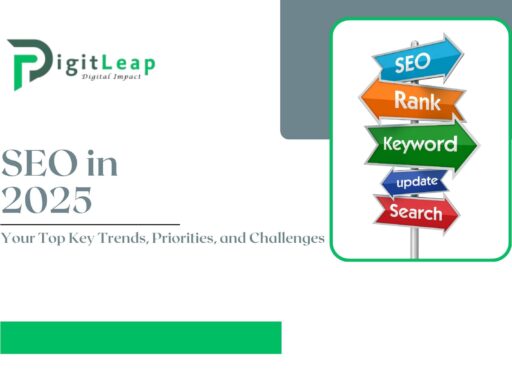How to Unlock Growth in 30 Days: The Secrets of Enterprise SEO
For large enterprises, SEO isn’t just a strategy—it’s a powerful tool that, when used right, can lead to significant growth. Enterprise SEO, which differs from standard SEO in scale and complexity, involves optimizing hundreds or thousands of web pages to rank higher, attract qualified leads, and ultimately drive growth. But where do you start, and how can you see results within just 30 days? Let’s uncover some essential secrets of enterprise SEO that can help boost your business growth fast.
Understanding the Unique Needs of Enterprise SEO
Enterprise SEO differs from traditional SEO because it has to handle the complexities of a large website. For big brands, there are often multiple product lines, countless service pages, and extensive blog content to manage. These sites require a systematic approach to maintain keyword consistency, brand voice, and optimized user experience across all pages. But with the right focus, even a massive site can unlock growth in a short time.
Let’s explore a 30-day roadmap to achieve substantial results by harnessing the power of enterprise SEO.
Day 1–5: Conduct a Thorough SEO Audit
Before diving into optimization, you need a clear picture of your site’s current SEO health. A comprehensive SEO audit provides valuable insights and helps prioritize the steps to improve rankings quickly.
- Technical SEO Check: Use tools like Screaming Frog, SEMrush, or Ahrefs to identify issues related to page speed, mobile usability, crawl errors, broken links, and site structure. Technical SEO issues can hurt rankings, so resolving these first is critical.
- Content Audit: Review existing content to determine what’s performing well, what’s outdated, and where there are gaps. Prioritize content that attracts traffic and is in line with current business goals.
- Keyword Analysis: Identify keywords that are driving traffic and those with growth potential. In enterprise SEO, targeting high-value, competitive keywords can lead to significant traffic gains.
A thorough audit ensures you have a data-backed understanding of what needs immediate attention and sets a strong foundation for the coming weeks.
Day 6–10: Optimize Technical SEO Elements
After identifying technical issues, focus on resolving them to improve your site’s crawlability, speed, and mobile-friendliness—factors that Google emphasizes heavily.
- Page Speed Optimization: Slow sites negatively affect user experience and rankings. Compress images, leverage browser caching, and consider content delivery networks (CDNs) to boost load speeds.
- Mobile Optimization: With the majority of users on mobile, Google prioritizes mobile-first indexing. Ensure that your site is responsive and loads quickly on mobile devices.
- Schema Markup: Implement schema markup to help search engines better understand your content. Structured data can improve click-through rates by enabling rich snippets in SERPs, helping you stand out among competitors.
These technical improvements might seem minor but can significantly impact rankings and site performance, setting the stage for a smoother user experience.
Day 11–15: Content Refresh and Optimization
Content is the backbone of any SEO strategy, and for enterprise sites, refreshing and optimizing content can yield quick gains. Use the findings from your audit to enhance content that’s already ranking or nearly ranking on page one.
- Content Updates: For existing content, update outdated information, add relevant keywords, and refresh visuals to make it more engaging. Google favors up-to-date content that adds value to users.
- Internal Linking Strategy: Strengthen internal links across your pages. Internal links help users and search engines navigate your site more effectively, distribute link equity, and highlight priority content.
- Keyword Optimization: Add secondary keywords and phrases that align with user intent. Use keywords naturally to maintain readability and improve relevance without stuffing.
This refresh process allows you to capture more traffic from existing content and positions your site as a current, valuable resource for users and search engines.
Day 16–20: Enhance On-Page SEO
On-page SEO is essential for improving individual page performance. In these next few days, optimize critical elements like meta tags, headers, and images to boost visibility.
- Meta Title and Description Optimization: Write compelling meta titles and descriptions that include primary keywords and match user intent. Well-crafted meta tags improve click-through rates, giving you an edge in search results.
- Header Tags and Structure: Use header tags (H1, H2, H3) to organize content logically and make it easier for both users and search engines to understand. Each header should guide the reader and incorporate relevant keywords naturally.
- Image Optimization: Ensure all images are optimized with descriptive alt text and appropriate file sizes. Image optimization is critical for speed and accessibility and can drive additional traffic from image searches.
Enhanced on-page SEO fine-tunes your pages, making them more appealing to search engines and increasing the likelihood of higher rankings.
Day 21–25: Build Quality Backlinks
Backlinks are one of the most impactful SEO ranking factors, and for enterprise websites, having a strong link profile is essential. Aim to build high-quality backlinks from authoritative sources to boost credibility and visibility.
- Identify High-Value Link Opportunities: Research industry publications, partner sites, and reputable blogs for potential link-building opportunities. Focus on sites that are relevant to your industry and have high domain authority.
- Content Outreach: Reach out to industry influencers, bloggers, or news sites with content that provides value and encourages sharing. Content like original research, infographics, and expert guides often attract natural backlinks.
- Leverage Internal Resources: Utilize your company’s internal resources, such as PR teams, to secure mentions and links from business news, events, and case studies. Links from credible sources reinforce your brand’s authority.
Quality backlinks build credibility, signaling to search engines that your site is a trusted source, and can result in noticeable improvements in search rankings.
Day 26–28: Focus on User Experience (UX) and Core Web Vitals
Google’s Core Web Vitals—metrics that measure user experience—are a critical ranking factor. Optimizing for UX ensures that users find your site enjoyable and accessible, which positively impacts SEO.
- Page Layout and Readability: Structure content for readability with clear fonts, ample white space, and accessible layouts. A user-friendly design keeps visitors engaged, lowering bounce rates.
- Core Web Vitals Check: Ensure your site scores well in Core Web Vitals by focusing on loading performance, interactivity, and visual stability. Tools like Google PageSpeed Insights and Lighthouse can help you track these metrics.
- Reduce Pop-Ups and Disruptions: Intrusive pop-ups and ads can frustrate users, leading to higher bounce rates. Keep interruptions minimal to enhance the overall browsing experience.
Improving UX aligns with Google’s focus on user-centric ranking factors, giving your site a competitive edge.
Day 29: Measure and Adjust
After implementing these strategies, it’s essential to assess progress. Use analytics tools to measure the impact of your changes, looking at metrics like organic traffic, rankings, and conversion rates.
- Check Keyword Performance: Review the rankings of your targeted keywords to see where improvements have been made and identify areas that may need further attention.
- Analyze Traffic Trends: Examine organic traffic patterns to understand where growth has occurred. A rise in organic visits indicates successful optimization efforts.
- Track Engagement Metrics: Metrics like bounce rate, time on site, and pages per session give insights into user satisfaction. Improved engagement metrics suggest that your enhancements have made a positive impact.
Regular analysis helps you refine your SEO strategy based on real results, ensuring your efforts are aligned with business goals.
Day 30: Set Up a Long-Term SEO Plan
The final day marks the beginning of ongoing growth. Use the insights gathered over the past month to build a long-term enterprise SEO plan that prioritizes consistent optimization, content development, and link-building strategies.
- Create a Content Calendar: Plan a content calendar to maintain fresh, relevant content. New blog posts, product updates, and case studies help keep your site active and engaging.
- Monitor Competitors: Regularly review competitor SEO strategies to stay competitive and identify new opportunities for growth.
- Continuous Improvement: SEO is an ongoing process. Revisit and update content, monitor performance, and adapt to Google’s algorithm updates to sustain growth.
Conclusion
Unlocking growth in 30 days through enterprise SEO is achievable with a focused approach and well-executed strategy. By auditing your site, improving technical SEO, refreshing content, and building quality backlinks, you’ll create a solid foundation for long-term success.
At Digit Leap, we specialize in enterprise SEO solutions designed to help brands grow quickly and sustainably. By leveraging our expertise, businesses can achieve lasting results and continue to thrive in an increasingly digital marketplace.






